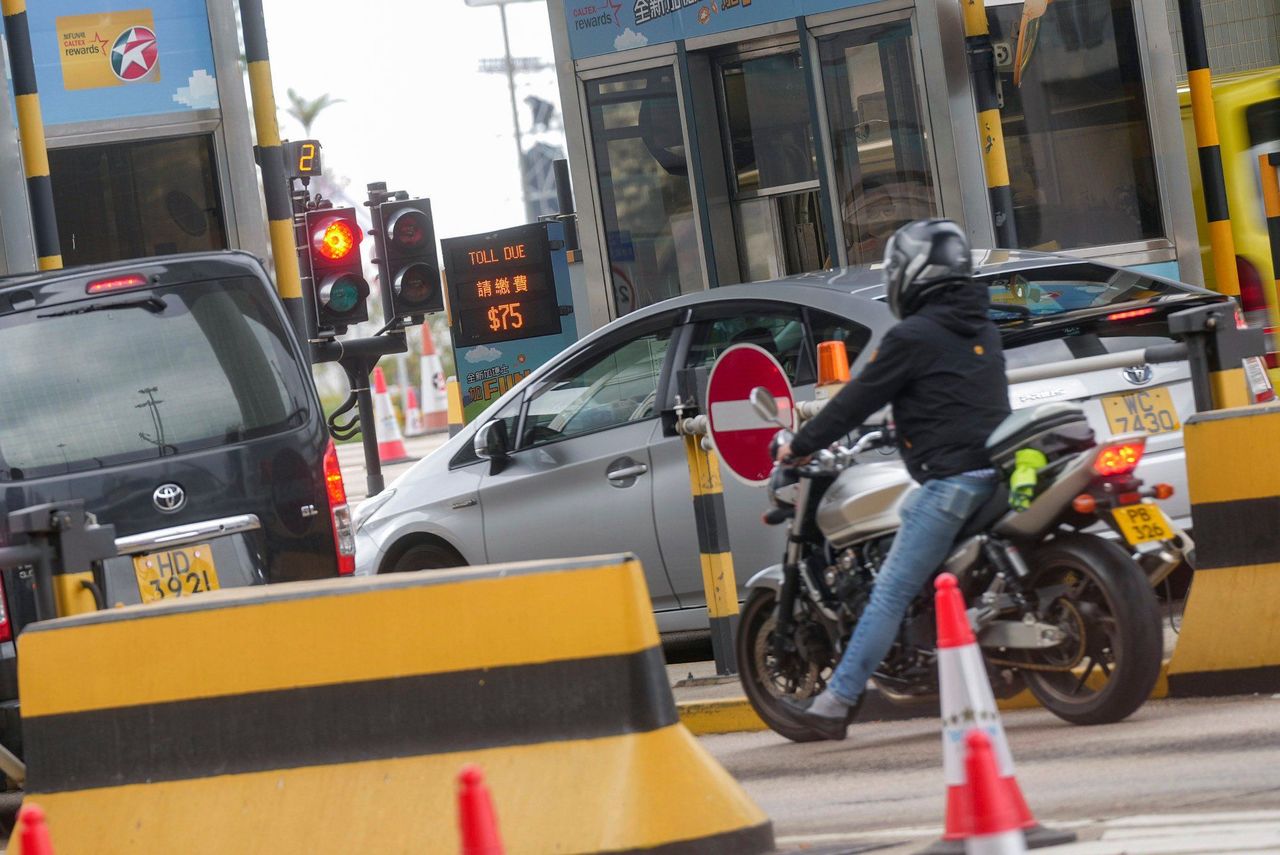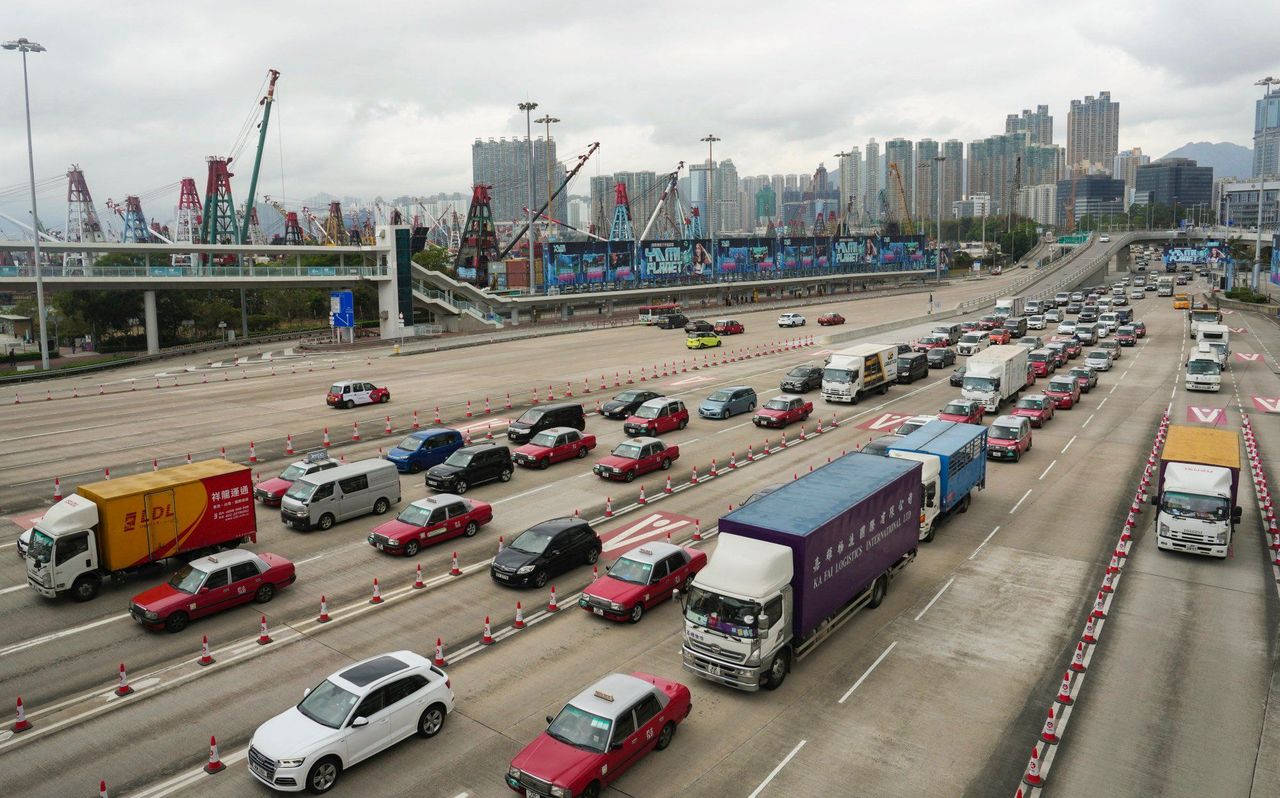Hong Kong News

How can you avoid new peak prices at Hong Kong’s cross-harbour tunnel tolls?
Hong Kong will narrow the difference in charges for the city’s three cross-harbour tunnels from August 2 in a bid to address long-standing traffic congestion issues.
Authorities have also announced they will raise prices later this year to discourage drivers from using the tunnels during peak hours.
The Post takes a closer look at the impact on motorists and the best strategies for crossing the harbour under the new arrangements.
 Motorists line up at the Western Harbour Tunnel.
Motorists line up at the Western Harbour Tunnel. 1. What are the proposed changes?
The first phase of the two-stage arrangement to ease congestion will cut tolls for private cars using the Western Harbour Tunnel from HK$75 (US$9.6) to HK$60, while charges for the Eastern Harbour Tunnel and Cross-Harbour Tunnel will increase to HK$30 from HK$20 and HK$25 respectively.
The changes will come into effect on August 2 after the western crossing’s franchise agreement expires and the government takes over the tunnel’s operation.
Taxis will be charged a standardised fee of HK$25 at all three crossings.
The authorities will implement time-adjusted tolls at the tunnels by the end of the year as part of the plan’s second phase.
2. How will the time-adjusted tolls work?
During peak hours from 7.30am to 10.15am, and again from 4.30pm to 7pm, on Monday to Saturday, private cars will be charged HK$60 at the Western Harbour Tunnel and HK$40 at the Cross-Harbour Tunnel and Eastern Harbour Tunnel. The new peak-hour toll for the Cross-Harbour Tunnel is twice its current price.
All three tunnels will charge HK$30 during regular time slots from 10.15am to 4.30pm and HK$20 during off-peak hours, which are between 7pm and 7.30am the next day.
To discourage motorists from rushing to the booths, or slowing down, before the tolls change price, charges will increase or decrease by HK$2 every two minutes when transitioning to peak-hour or non-peak-hour periods until they reach the maximum rate.
3. How much could drivers pay when missing the cut-off for non-peak hours?
A driver of a private vehicle who wants to pay only HK$20 using the Cross-Harbour Tunnel would have to pass through the toll booth by 7.30am, before the peak hour charges kick in. The toll will increase by HK$2 every two minutes up to the maximum peak-hour amount of HK$40, if the driver is late by 18 minutes, which would double what the person wished to pay.
If another motorist passes through the toll booth at the Western Harbour Tunnel at or before 7.30am, they would be able to enjoy the cheapest non-peak hour toll, which is HK$20.
 Heavy traffic during peak hour on the Kowloon side of the Western Harbour Tunnel.
Heavy traffic during peak hour on the Kowloon side of the Western Harbour Tunnel.
However, if it takes longer for the person to reach the tunnel due to heavy traffic, the toll will jump to HK$40 by 7.48am. But if the driver arrives at the toll booth at 8:08am, the price would have reached the more expensive peak-hour rate of HK$60 and will last until the time slot ends.
In other words, the difference in tolls can be as much as HK$40 in just 38 minutes under the new plan at the western crossing.
4. Will drivers find ways to pay the lowest tolls?
The new plan has prompted the question of whether motorists would deliberately speed up or slow down to benefit from cheaper tolls.
Commissioner for Transport Rosanna Law Shuk-pui said there were legal speed limits in the tunnel areas and it was difficult for drivers to deliberately slow down or accelerate dramatically at the entrance during peak hours.
“Take Western Harbour Tunnel as an example, drivers can hardly find an area nearby to deliberately slow down and wait. The authorities will introduce special traffic arrangements in the early stage of the plan and cooperate with police and tunnel companies to monitor the road conditions,” Lau said in a press conference on Wednesday
“We believe drivers will not deliberately wait because of the additional HK$2 toll.”
A spokesman from the Transport Department added that if motorists’ behaviour endangered road safety, the existing dangerous driving regulations would apply.
5. How unbalanced is traffic at the cross-harbour tunnels?
The Cross-Harbour Tunnel is the busiest of the three sites, with a total of 18.5 million two-way crossings by private cars and 7.8 million by taxis last year. The number of two-way journeys by private cars and taxis through the Eastern Harbour Tunnel was 15.4 million and 4.9 million, respectively.
Western Harbour Tunnel, which had the highest tolls, logged the least amount of two-way crossings, with 9.6 million by private cars and 3.3 million by taxis in that period.
Chow Kwok-keung, chairman of the Hong Kong Taxi and Public Light Bus Association, said that it could take around 50 minutes to cross the harbour during peak hours, while the journey could be greatly reduced to around eight to nine minutes when traffic is light on Sunday at the Cross-Harbour Tunnel.
6. How will the changes affect taxi passengers?
With a flat rate of HK$25 for taxis at all three cross-harbour tunnels, Chow said frequent taxi passengers would be better off under the new arrangements.
He said those who took the Western Harbour Tunnel were previously charged HK$85, which included the return toll. In future, they would only pay HK$50 to cover a two-way trip. The cheaper tolls at that crossing could offset the extra cost of travelling to get to the tunnel, he said.
“The plan will be favourable to the taxi industry,” Chow said. “Those who frequently take taxis will opt more for the western crossing.”
Ride-hailing platform Uber did not offer any comment on how it would charge passengers.











